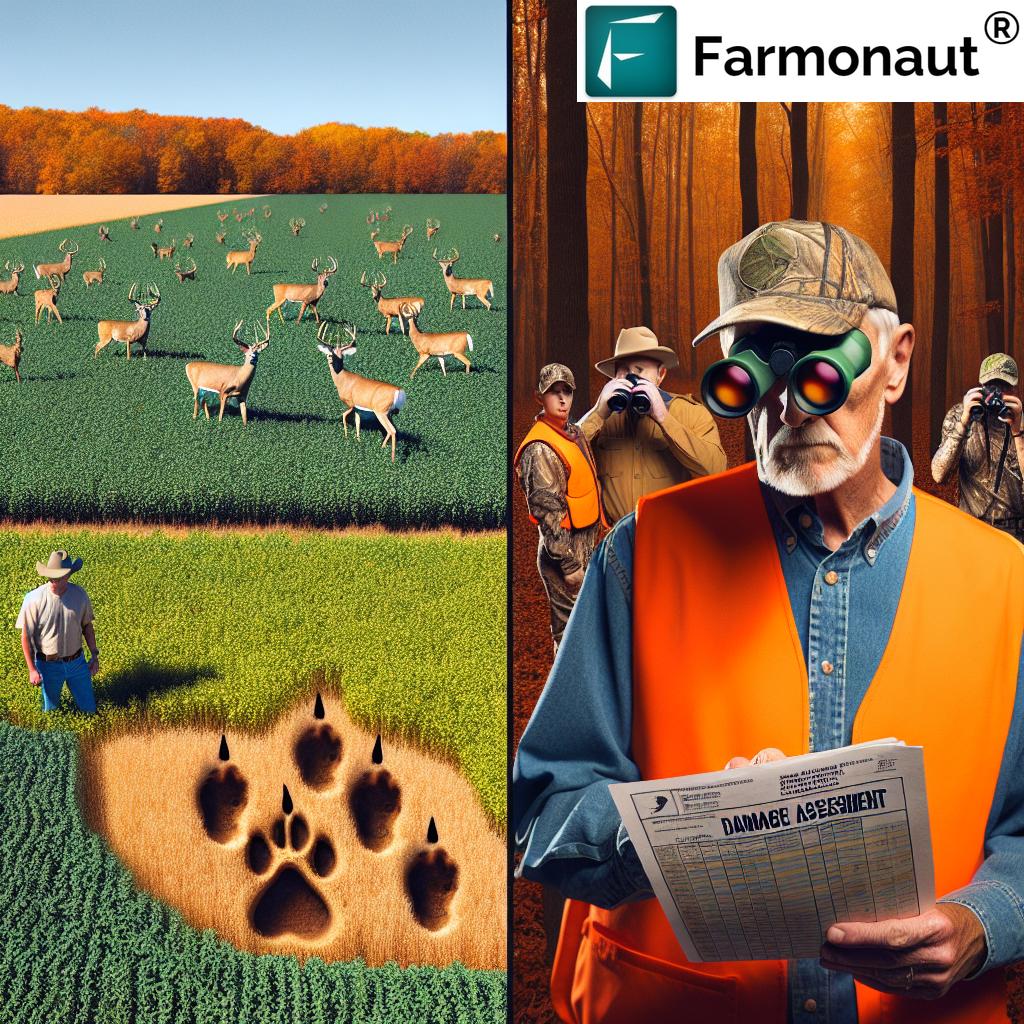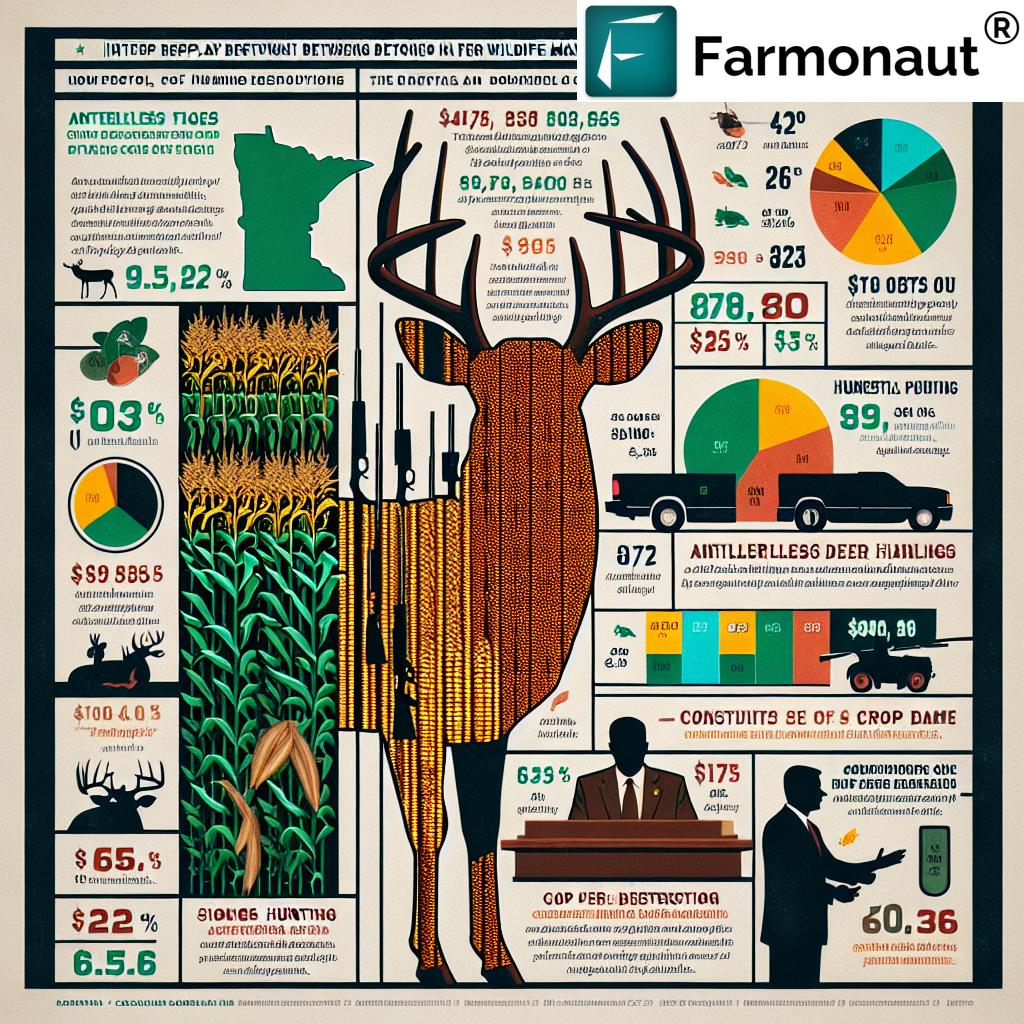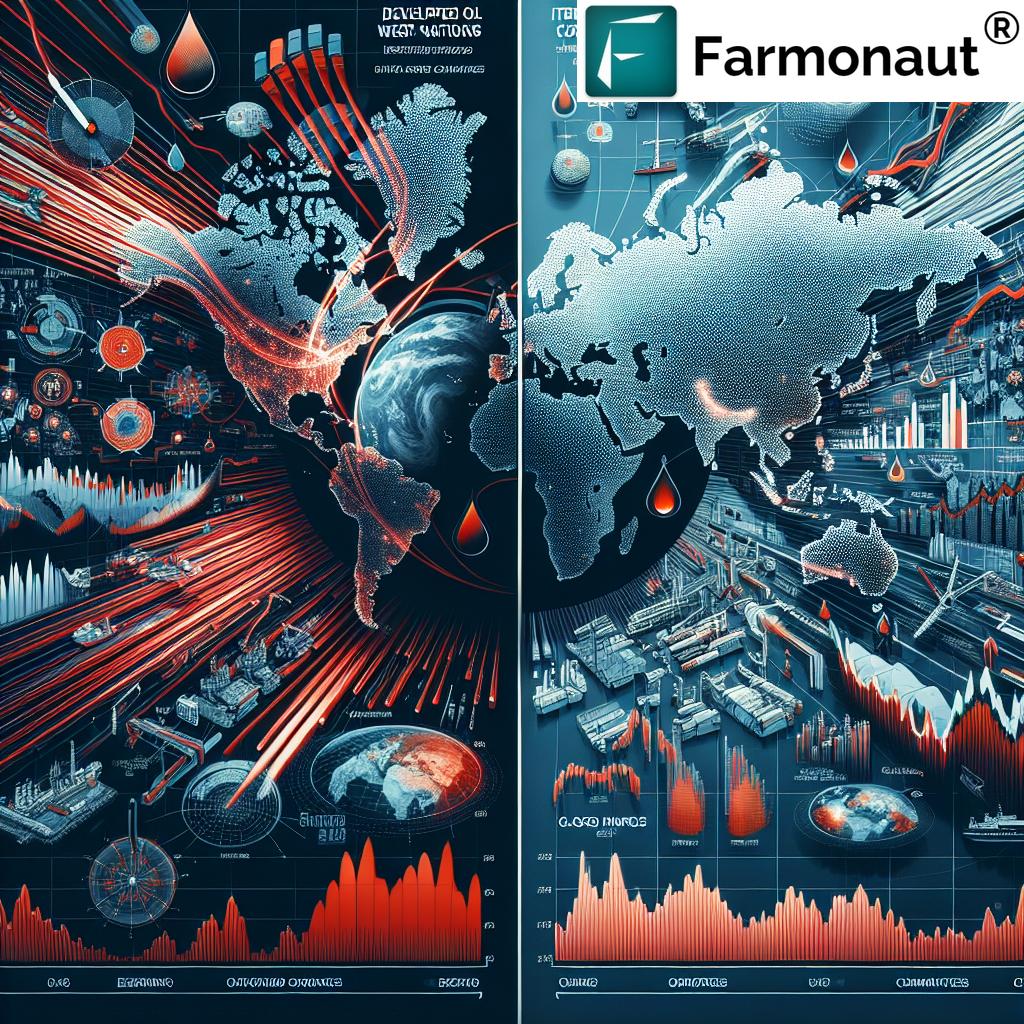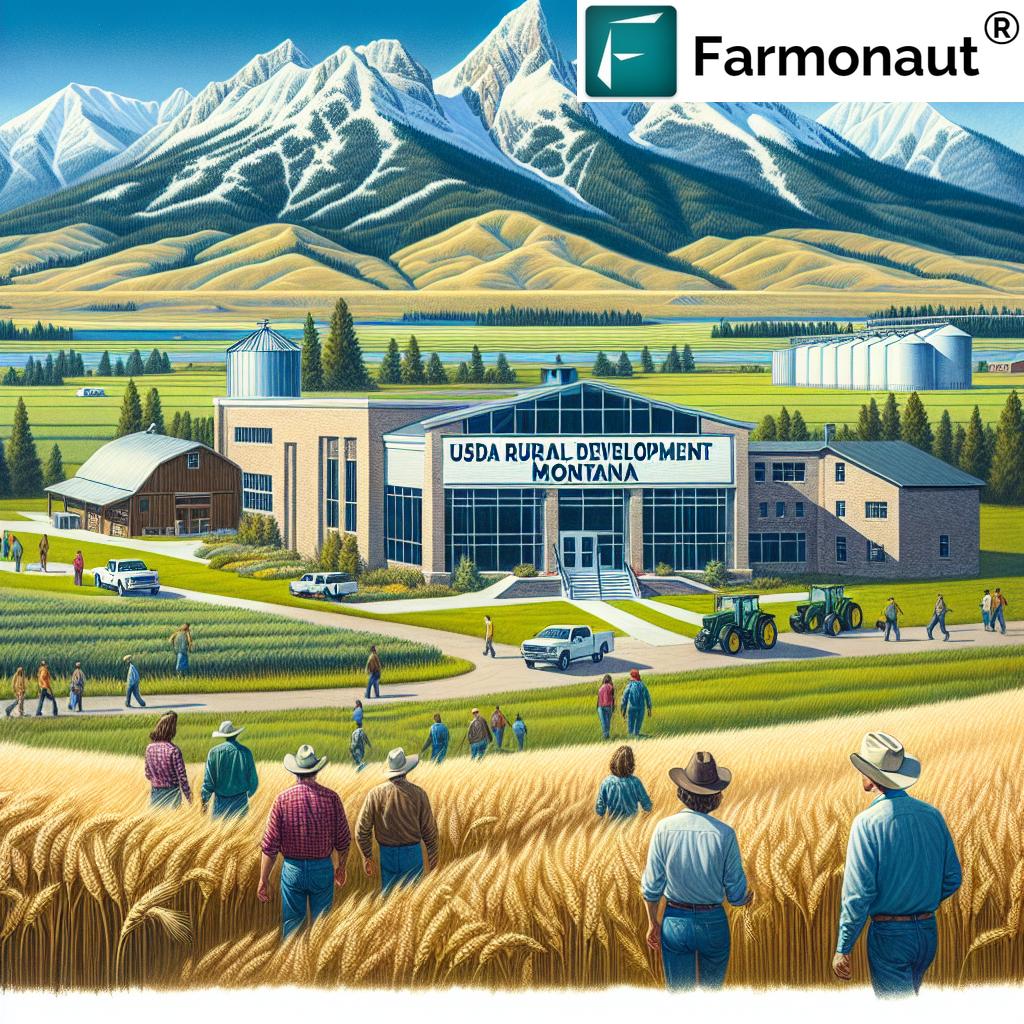Unleash the Controversy: Minnesota’s Deer Dilemma Pits Hunters Against Farmers in Epic Wildlife Management Showdown
In the heart of Minnesota’s picturesque landscapes, a fierce battle is brewing between farmers and hunters, igniting a Minnesota deer management controversy that has captured the attention of wildlife enthusiasts, agricultural communities, and state officials alike. The epicenter of this dispute lies in Big Stone County, where the delicate balance between wildlife conservation and agriculture has been thrown into disarray, sparking heated debates and raising crucial questions about the future of deer population control in the state.

The Root of the Conflict: Crop Damage and Wildlife Management
At the heart of this controversy are the DNR crop damage permits, a contentious tool in the state’s deer depredation program. These permits, issued by the Minnesota Department of Natural Resources (DNR), allow farmers to take matters into their own hands when it comes to protecting their crops from deer damage. However, what was intended as a solution has become a flashpoint in the ongoing farmer-hunter conflict in Minnesota.
The situation reached a boiling point in Big Stone County when reports emerged of a farmer legally harvesting 10 deer under one of these permits. But the controversy didn’t stop there – rumors of additional unreported kills sent shockwaves through the local hunting community, igniting a firestorm of debate about the effectiveness and fairness of the current wildlife management system.
Voices from the Field: Hunters’ Concerns
Local hunters like Ed Vollmer and Bruce Nelson have become vocal critics of the current system, expressing deep concern over what they perceive as a threat to both their hunting traditions and broader conservation efforts. Their fears are not unfounded – the DNR’s decision to issue permits allowing three farmers to harvest up to 65 deer in Permit Area 274 could potentially impact over 15% of last year’s total deer harvest in the area.
“This isn’t just about our hunting opportunities,” says Vollmer, a lifelong Minnesota resident and avid hunter. “It’s about maintaining a healthy balance in our ecosystem and ensuring that our wildlife populations are managed sustainably for future generations.”
Nelson echoes these sentiments, adding, “We understand the farmers’ need to protect their crops, but there has to be a better way that doesn’t compromise our state’s rich hunting heritage and wildlife conservation efforts.”
The Farmer’s Perspective: Protecting Livelihoods
On the other side of the fence, farmers argue that the crop damage permits for deer control are essential for protecting their livelihoods. With deer populations in some areas reaching levels that can cause significant damage to crops, many farmers see these permits as a necessary last resort.
“We’re not out here trying to decimate the deer population,” explains Sarah Johnson, a third-generation farmer from Big Stone County. “But when you’re looking at thousands of dollars in crop damage year after year, something has to give. These permits are often our only recourse when other deterrent methods fail.”

The DNR’s Dilemma: Balancing Competing Interests
Caught in the middle of this heated debate is the Minnesota Department of Natural Resources, tasked with the unenviable job of balancing deer population and crop protection while satisfying the often conflicting demands of farmers and hunters. The agency’s Minnesota DNR deer harvest regulations are under intense scrutiny as they attempt to navigate this complex issue.
“Our primary goal is to maintain healthy wildlife populations while minimizing conflicts with human activities,” states DNR Wildlife Manager John Smith. “The crop damage permit system is just one tool in our broader wildlife management strategy, but we’re constantly evaluating its effectiveness and looking for ways to improve.”
The Big Stone County Incident: A Catalyst for Change?
The recent Big Stone County deer hunting dispute has brought these long-simmering tensions to the forefront of public discourse. The incident, which resulted in one farmer being cited for unreported kills, has sparked calls for greater oversight and transparency in the crop damage permit system.
State lawmakers are now grappling with potential solutions, debating everything from increasing the number of antlerless deer tags available to hunters to implementing a compensation program for farmers who suffer crop damage from deer. However, finding a solution that satisfies all parties involved remains a daunting challenge.
The Broader Implications: A Test Case for Agricultural Wildlife Management
The controversy in Minnesota is more than just a local dispute – it’s a microcosm of the broader challenges facing agricultural wildlife management across the United States. As human development continues to encroach on wildlife habitats, conflicts between conservation efforts and agricultural interests are becoming increasingly common.
Experts in the field of wildlife biology and agricultural science are closely watching the Minnesota situation, seeing it as a potential test case for innovative approaches to managing these conflicts. Some proposed solutions include:
- Implementing more sophisticated deer population monitoring techniques
- Developing new, non-lethal methods for deterring deer from agricultural areas
- Creating collaborative management plans that involve input from both farmers and hunters
- Exploring the use of technology, such as drones and remote sensing, to assess and mitigate crop damage
For farmers looking to leverage technology in their crop management efforts, tools like Farmonaut’s satellite-based crop monitoring system can be invaluable. 
The Road Ahead: Seeking Common Ground
As the debate rages on, one thing is clear: finding a sustainable solution to the Minnesota deer hunting controversy will require open dialogue, creative thinking, and a willingness to compromise from all parties involved. The challenge lies in developing a management strategy that protects agricultural interests while preserving the state’s rich hunting traditions and commitment to wildlife conservation.
“We’re all stakeholders in this issue,” says Wildlife Biologist Dr. Emily Chen. “Farmers, hunters, conservationists – we all want to see healthy ecosystems and thriving communities. The key is finding ways to work together rather than against each other.”
As Minnesota grapples with this complex issue, the eyes of the nation are watching. The solutions developed here could serve as a model for other states facing similar challenges in balancing the needs of agriculture, wildlife, and outdoor recreation.
For those interested in exploring cutting-edge solutions for agricultural management, Farmonaut offers a range of tools and services. Check out their API for developers or download their mobile apps:
Conclusion: A Call for Collaborative Solutions
As Minnesota continues to wrestle with its deer dilemma, the controversy serves as a powerful reminder of the complex challenges inherent in modern wildlife management. The ongoing dispute between farmers and hunters highlights the need for innovative, collaborative approaches that can balance the diverse needs of all stakeholders.
While the path forward may be challenging, it also presents an opportunity for Minnesota to lead the way in developing sustainable, equitable solutions to the age-old conflict between human activities and wildlife conservation. By bringing together farmers, hunters, wildlife biologists, and policymakers, the state has the potential to craft a management strategy that could serve as a model for the rest of the nation.
As this epic showdown in wildlife management continues to unfold, one thing is certain: the outcome will have far-reaching implications for the future of Minnesota deer hunting, agricultural practices, and wildlife conservation efforts for years to come.
For more information on innovative agricultural technologies and solutions, visit Farmonaut’s API Developer Docs.















